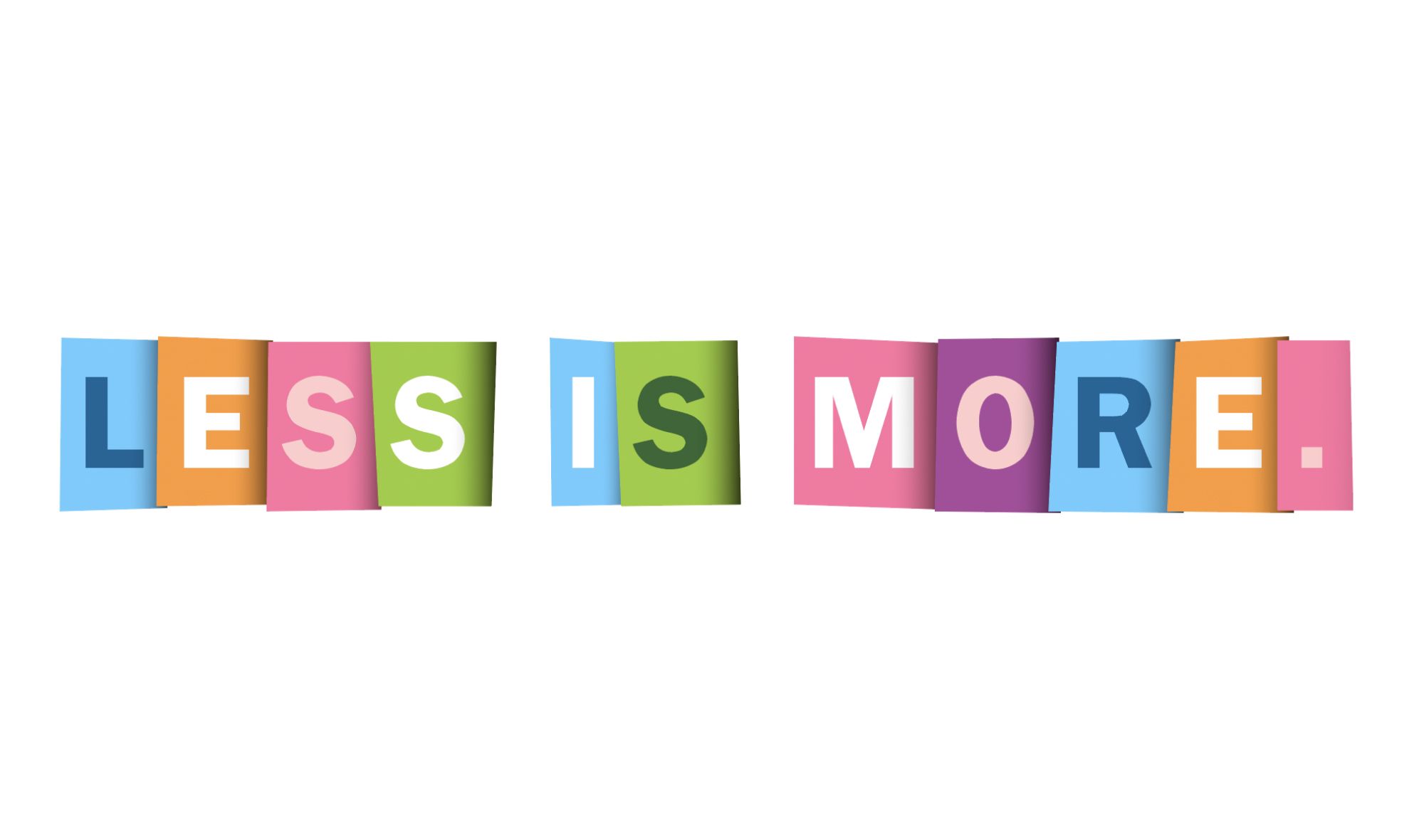When less is more: examples of silence that have a powerful impact
By Remy Meraz • April 11, 2023

In a world that is constantly filled with noise, sometimes it's the moments of silence that can have the most profound impact. The concept of "less is more" suggests that simplicity and minimalism can often be more powerful than excess and complexity.
When it comes to communication, silence can be an incredibly effective tool to convey emotion, create tension, and leave a lasting impression. In this blog post, we'll explore some examples of silence in various forms of media and art that demonstrate the power of saying nothing at all. From the use of silence in film and music to the art of storytelling and public speaking, we'll see how the absence of words can sometimes speak louder than anything else.
So, let's take a moment to appreciate the value of silence and discover how sometimes, less truly is more.
What is silent communication?

Silent communication, also known as nonverbal communication, is the process of communicating and conveying meaning without the use of words. It involves using gestures, facial expressions, body language, and other nonverbal cues to convey thoughts, emotions, and ideas.
The study of nonverbal communication dates back to ancient times, with early civilizations recognizing the importance of body language and other nonverbal cues. The ancient Greeks were the first to study the art of rhetoric, which included understanding body posture and how to use gestures and facial expressions to convey meaning in public speaking.
In the modern era, the study of nonverbal communication began to emerge as a field of its own in the mid-20th century. One of the pioneers in this field was Ray Birdwhistell, an anthropologist who conducted extensive research on nonverbal communication in the 1950s and 1960s. He developed a system for analyzing nonverbal behavior that he called "kinesics," which is still used today.
Other researchers in the field of nonverbal communication have studied topics such as the role of body language in social interactions, the impact of facial expressions on emotional expression and recognition, and the use of nonverbal cues in deception detection. The study of nonverbal communication has also been applied to various fields, including psychology, sociology, and business.
Types of silent communication

Nonverbal behaviors can be split into two categories: positive silence and negative silence.
Positive silence:
Positive silence refers to deliberate and purposeful silence that is intended to convey a positive message or show respect. This powerful form of nonverbal communication is often underestimated and can be used to convey a wide range of emotions and messages without the use of words.
For example, when someone is speaking, positive silence can be used to indicate that the listener is actively engaged in the conversation and is listening attentively. This can be achieved by maintaining eye contact, nodding in agreement, and using facial expressions that indicate interest and understanding.
Positive silence can also be used to show respect and deference to others. For example, in many different cultures, it is considered respectful to pause before speaking, allowing others to finish what they are saying before responding. This silence can be used to show that the listener values the speaker's thoughts and opinions and is willing to give them the time and space to express themselves fully.
Negative silence:
Negative silence, on the other hand, refers to a silence meant to convey a negative message or show disapproval. This type of silence can be passive-aggressive in nature, as it is often used to express dissatisfaction or to punish someone for their actions.
One common example of negative silence is when someone intentionally withholds information, communications, or feedback as a way of expressing their disapproval. For example: a manager may refuse to provide feedback to an employee as a way of punishing them for a mistake they made, learn more about their roles to identify this. Similarly, a partner may refuse to respond to calls or messages as a way of expressing their dissatisfaction with the relationship.
Examples of silence and nonverbal communication

Silence and nonverbal communication can be found in various forms of art, music, public speaking, and relationships. Examples include:
Silence in music:
John Cage's 4'33" is a musical composition consisting of three movements that are all performed in silence. The idea behind the piece is that the ambient noise of the performance space becomes the music.
The audience is encouraged to listen to the sounds around them, rather than focusing on a traditional musical performance. This use of silence challenges traditional notions of what music is and can be.
Join our Newsletter
Transform your career with our personal growth insights. Get one valuable tip right in your inbox every Saturday morning.
Silence in public speaking:
Moments of silence can have a powerful impact on emotional responses in public speaking. For example, a speaker may use a moment of silence to allow the audience to reflect on a poignant point or to create a sense of tension before revealing an important piece of information. Pauses can also be used to emphasize key talking points and allow the audience time to absorb the information.
Silence in art:
Negative space and minimalism are forms of art that use silence to create a powerful impact. Negative space refers to the area around and between objects in an image. By using negative space, artists can create a sense of balance and harmony in their work.
Minimalism also uses silence to communicate by simplifying forms and compositions to their most essential elements. By stripping away unnecessary details, artists can create a sense of purity and focus the viewer's attention on what is essential.
Silence in relationships:
Active listening and taking pauses in conversation are essential for effective communication and healthy relationships. Active listening involves giving your full attention to the speaker and showing that you understand what they are saying through nonverbal cues, such as nodding and eye contact.
Taking pauses in conversation can also be helpful to allow each person time to reflect and consider what has been said, and to avoid misunderstandings.
The psychological and emotional impact of silence

Silence can have a powerful impact on our psychological and emotional well-being. While it can be beneficial for relaxation, focus, introspection, and self-awareness, it can also be uncomfortable or scary for some people. Understanding how silence affects us individually can help us to harness its benefits and navigate any potential challenges.
For example, silence is an essential component of mindfulness and meditation practices. Mindfulness is the practice of paying attention to the present moment without judgment. Meditation is the practice of quieting the mind to achieve a state of deep relaxation and inner peace.
Silence plays a crucial role in both practices by allowing individuals to focus their attention on their thoughts, emotions, and sensations in the present moment. By quieting the mind and focusing on the present moment, individuals can reduce stress and anxiety, improve their mental clarity, and enhance their overall sense of well-being.
Silence can also be used as a tool for promoting self-reflection and introspection. By taking time to be alone in silence, individuals can reflect on their thoughts, feelings, and experiences. Silence allows individuals to listen to their inner voice and gain insight into their own beliefs, values, and goals. Through self-reflection and introspection, individuals can gain a deeper understanding of themselves, develop greater self-awareness, and make more informed decisions.
If you're experiencing symptoms and are unsure about how to manage them, we have compiled a comprehensive guide on dealing with the stages of a male midlife crisis.
The limitations and risks of the silent treatment

While silence can have positive effects on our psychological and emotional well-being as human beings, there are also limitations and risks associated with its use, particularly when it is used as a tool of oppression or manipulation. By considering the impact of silence and its potential for harm, we can use it more effectively and constructively in our lives.
The impact of silence depends on the context and intention of its use. In some situations, such as during meditation or reflection, silence can be beneficial. In other situations, such as when used as a punishment or to manipulate others, it can be harmful. It is important to consider the context and intention of silence to understand its impact.
It's important to also consider that in certain contexts, such as in a workplace or social setting, silence can be used to reinforce power imbalances. For example, when someone withholds communication or feedback from a subordinate, it can be used as a way of asserting authority and controlling the situation. Alternatively, silence could be seen as a sign of disrespect, disapproval, anger, confusion, or indifference. It is important to clarify the meaning behind silence to avoid misunderstandings or hurt feelings.
Recap: what your silence communicates

Whether in music, public speaking, art, or relationships, the power of nonverbal communication should not be underestimated. Ultimately, in some situations, less is truly more, and the absence of words can be just as powerful as their presence.
The silent treatment has the power to create a profound impact on our psychological and emotional well-being. However, it is important to use silence mindfully, as it can also be used to manipulate, oppress, or harm others. It is important to consider the context and intention behind the use of positive or negative silence to understand their impact and convey your message effectively.
On another note check out our blog on expressing gratitude. Discover why Google decided to fund and support Zella Life.
Join our Newsletter
Transform your career with our personal growth insights. Get one valuable tip right in your inbox every Saturday morning.
Read more about: Life Coaching, Executive Coaching
About Remy Meraz
Remy Meraz, co-founder, and CEO of Zella Life, is a visionary leader who leveraged corporate glass ceiling challenges as a woman of color to drive systemic change.
While leading and cultivating high-performance teams from VC-backed startups to Fortune 500, she consistently faced obstacles such as inadequate mentorship, lack of psychological safety, and non-personalized training. Taking matters into her own hands, she turned to executive coaching and NLP training. This life-changing growth experience led to breaking leadership barriers and a passion for cognitive psychology.
Motivated by her experiences, she co-founded Zella Life, an innovative AI-driven coaching platform bridging the talent development gap by enhancing soft skills and emotional intelligence (EQ) in the workplace.
Her vision with Zella Life is to transform professional development into an inclusive and impactful journey, focused on the distinct needs of both individuals and organizations. She aims to promote advancement and culture change by ensuring every professional's growth is acknowledged and supported.
Today, Remy is recognized as an influential innovator, trainer, mentor, and business leader. Under her leadership, Zella Life has delivered significant measurable outcomes for numerous well-known brands. This track record of positive outcomes garnered attention and funding from Google for Startups and Pledge LA, establishing Zella Life as a pivotal force in the learning and development arena tackling and resolving fundamental talent development issues for organizations of all sizes.